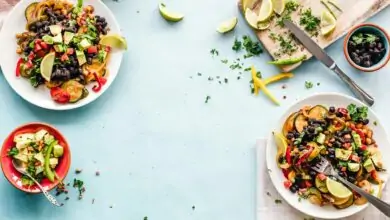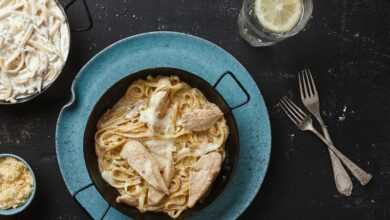
Healthy Holiday Eating: A Christmas Diet Guide
The holiday season is a time of joy, celebration, and, for many, indulgence. As Christmas approaches, we are often inundated with rich, tempting foods and treats that can make maintaining a healthy diet a daunting task. However, with a little mindfulness and some strategic planning, it is possible to enjoy the festivities while keeping your health in check. In this guide, we’ll explore the challenges of maintaining a healthy diet during Christmas, provide tips for mindful eating at holiday gatherings, share recipe ideas for lighter holiday dishes and appetizers, discuss strategies for portion control and managing holiday sweets, and highlight the benefits of incorporating seasonal fruits and vegetables into your festive feasts.
Christmas is a time of tradition, and many of these traditions revolve around food. Whether it’s the roast turkey, mince pies, or Christmas pudding, festive meals are often associated with indulgence and abundance. While it’s essential to enjoy these special treats, it’s equally important to be aware of the potential pitfalls of overindulging during the holiday season.
One of the significant challenges of maintaining a healthy diet during Christmas is the constant availability of high-calorie, sugary, and fatty foods. These indulgent treats can be hard to resist, and the constant stream of holiday parties and gatherings can lead to overeating. The result? Holiday weight gain and a feeling of sluggishness as the New Year approaches.
Tips for Mindful Eating at Christmas Gatherings and Parties
Mindful eating is the practice of being present and fully engaged with your food. It encourages you to pay attention to your body’s hunger and fullness cues and savour the flavours and textures of your meal. Here are some tips to help you eat mindfully during Christmas gatherings:
a. **Plan Ahead:** Before heading to a party or feast, have a small, balanced snack to curb your hunger. This can help you make better food choices and prevent overindulging in high-calorie snacks.
b. **Use Smaller Plates:** Opt for a smaller plate at the buffet table. This can help control portion sizes and prevent you from piling your plate with excess food.
c. **Savor Each Bite:** Take the time to appreciate the taste and texture of your food. Chew slowly and enjoy the flavours. This can help you feel satisfied with smaller portions.
d. **Stay Hydrated:** Drink plenty of water throughout the day, as thirst can often be mistaken for hunger. Having a glass of water before a meal can help control your appetite.
e. **Engage in Conversation:** Socialize and chat with friends and family at gatherings. This not only distracts you from mindlessly eating but also enhances the overall enjoyment of the event.
Recipe Ideas for Lighter Holiday Dishes and Appetizers
If you’re hosting a Christmas gathering or contributing to a potluck, consider preparing lighter dishes that are as delicious as they are nutritious. Here are some recipe ideas:
a. Roasted Vegetable Platter:
Ingredients:
Assorted seasonal vegetables (e.g., bell peppers, zucchini, carrots, cherry tomatoes)
Olive oil
Fresh herbs (rosemary, thyme)
Salt and pepper
Instructions:
Preheat the oven to 200°C (180°C fan).
Cut the vegetables into bite-sized pieces.
Toss them in olive oil, fresh herbs, salt, and pepper.
Roast in the oven for 25-30 minutes or until tender and slightly caramelized.
b. Quinoa and Cranberry Stuffed Mushrooms:
Ingredients:
Large mushroom caps
Cooked quinoa
Dried cranberries
Chopped spinach
Garlic
Olive oil
Grated Parmesan cheese (optional)
Salt and pepper
Instructions:
Remove the stems from the mushrooms and brush them with olive oil.
Sauté the mushroom stems, garlic, and spinach in a pan.
Mix the cooked quinoa, dried cranberries, sautéed mixture, and Parmesan cheese (if desired).
Fill the mushroom caps with the quinoa mixture and bake for 15-20 minutes at 180°C (160°C fan).
Strategies for Portion Control and Managing Holiday Sweets
Portion control is key to maintaining a healthy diet during Christmas. Here are some strategies to help you control your portions:
a. **Practice the Plate Method:** When filling your plate, aim for half to be filled with vegetables, one-quarter with protein (e.g., turkey), and one-quarter with starchy foods (e.g., potatoes). This method encourages a balanced meal.
b. **Use Small Serving Utensils:** When serving yourself or others, use smaller utensils to dish out food. This can help prevent overloading your plate.
c. **Mindful Dessert Choices:** Instead of sampling every dessert available, choose one or two that you genuinely enjoy. Savour small portions, and if you’re sharing, consider splitting a dessert with someone.
d. **Wait Before Seconds:** If you’re still hungry after your first plate, wait for 10-15 minutes before considering seconds. It can take some time for your body to register fullness.
Benefits of Incorporating Seasonal Fruits and Vegetables
Embracing seasonal fruits and vegetables during Christmas not only adds a fresh and healthy dimension to your festive meals but also offers a range of nutritional benefits. Some seasonal options to consider include:
a. **Clementines and Oranges:** These citrus fruits are a rich source of vitamin C, which can help support your immune system during the colder months.
b. **Brussels Sprouts:** Packed with vitamins K and C, as well as fibre, these little green vegetables make a nutritious side dish.
c. **Pomegranates:** These jewel-like seeds are full of antioxidants and add a burst of colour and flavour to salads and desserts.
d. **Cranberries:** Fresh cranberries are a good source of vitamin C and fibre. They can be used to make homemade cranberry sauce with less sugar than the canned varieties.
In the midst of Christmas festivities, it’s crucial to remember that maintaining a healthy diet is about balance, not deprivation. You can enjoy the holiday season and indulge in special treats while making mindful choices to support your well-being. By planning ahead, eating mindfully, incorporating lighter dishes, practising portion control, and including seasonal fruits and vegetables, you can strike a balance that allows you to savour the season’s joy without compromising your health. Remember, the key to a healthy Christmas diet is enjoying the holiday without the guilt or regrets from overindulging. Happy and healthy holidays to you and your loved ones!




